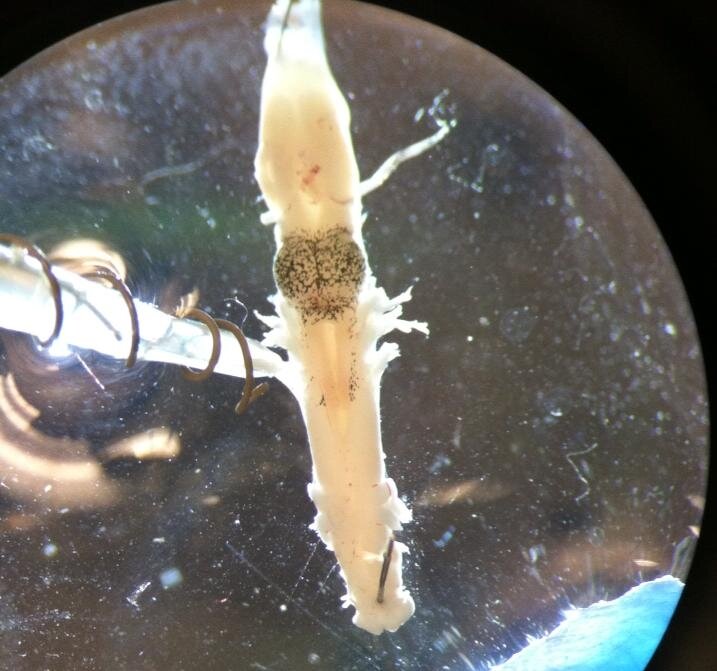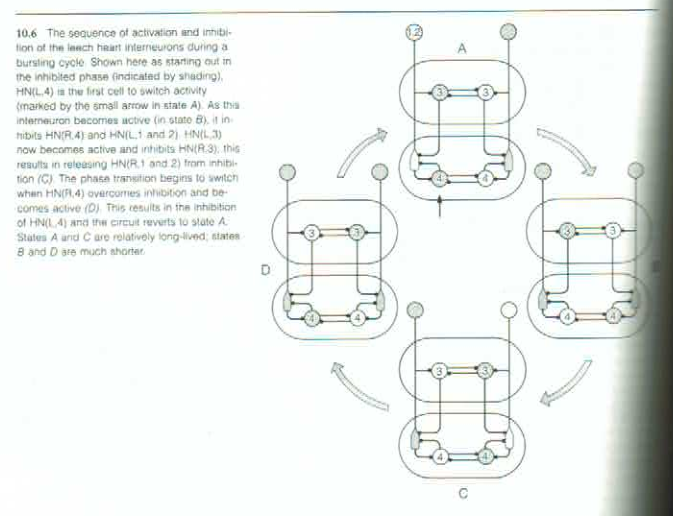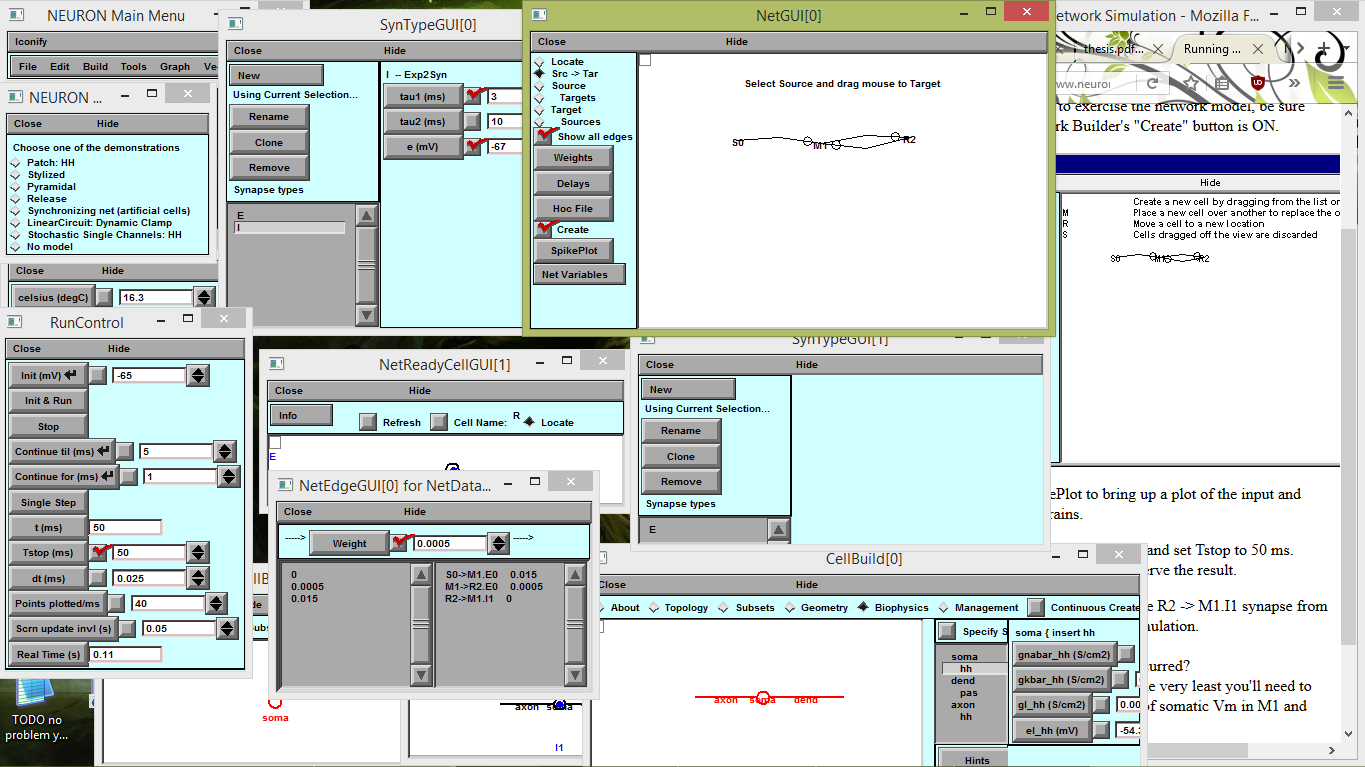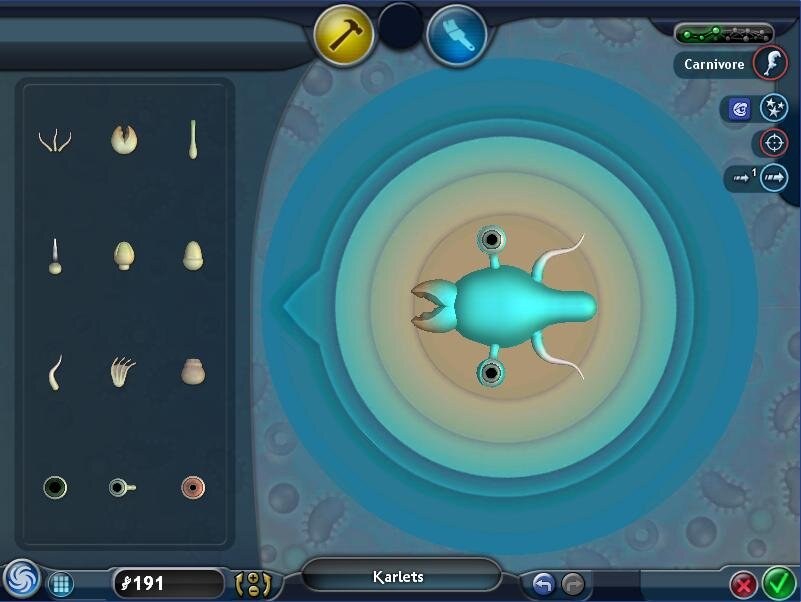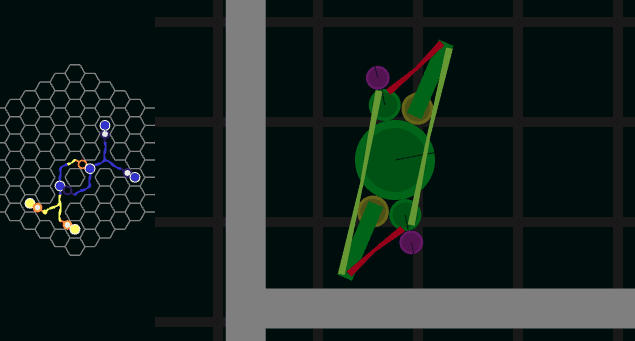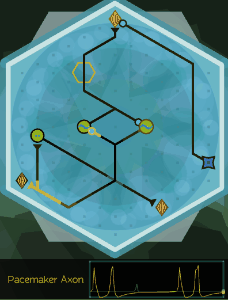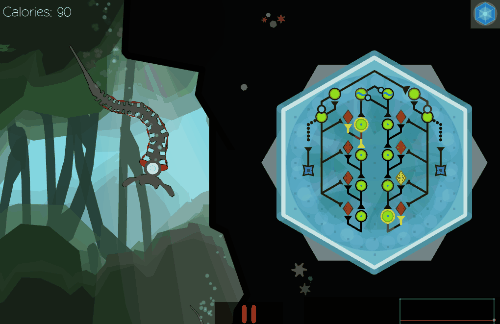Crescent Loom motivations
Throughout my introduction to neuroscience, I felt plagued by the lack of ability to visualize the information I was learning.
In class, we would discuss technicalities -- e.g. the distribution of voltage-gated sodium channels along an axon -- and I would occasionally make a connection where something clicked and I understood the elegant entwining of different systems. But with these epiphanies came a perspective about how little we actually know: only the absolute basics of a larger and a fractally-more nuanced system.
Today, you can open any scientific journal and immediately drown in details -- but understanding the context and the why is the chief difficulty for a student of biology. I began to find my contextual map in circuit-level models, particularly as described by Eve Marder. Her lab takes a simple behavior by a small creature (typically invertebrate) and studies how a system of a few dozen neurons controls it.
There is an easy-to-understand relevance to these systems: it's all about how they make the muscles (and thus, the animal) move. Transformed by meaning, the details had become a language. The pattern of neurons firing suddenly mattered; they directly determined how an animal behaved. Excited, I dove in, but again I was stymied. Our tools to actually study these circuits in biology are delicate, slow to set up, and give only glimpses of a neuron's activity.
In textbooks and papers, these circuits are depicted with diagrams. You can extract meaning from them, but it takes a fair amount of background knowledge and imagination to visualize their effects (figure from Neurons and Networks by John Dowling).
Turning to computational models, I found that most programs were built for producing publication-ready data and were technical to the point of being unusable.
I wanted a way to play with neurons in this strange language of networks and connections. Feynman once said, "what I cannot create, I do not understand"; in order to internalize how these systems worked, I needed a way to sketch up simple nervous systems and watch what they did.
I needed a game.
Crescent Loom
So: how to go about creating a game that illustrates this language of small nervous systems? The first step in any project is to do your homework: what other games have done something similar?
Spore lets you build creatures, but automates their movement in a typically video-game manner.
Kerbal Space Program lets you build rockets, which operate according to real orbital physics. Closer.
There's dozens of learn-to-program games where you program a robot to solve puzzles by stacking up commands (e.g. Switch and Glitch).
SpaceChem has you arranging a complicated system of nodes in order to construct molecules.
Games seem to have have construction mechanics pretty well figured out: you give the player a bin of parts that they snap together. Abstract control systems (such as in SpaceChem) are similar, but it's important to not overwhelm the player with a whole bunch of unfamiliar pieces at once. Most of these puzzle games start out with most simple elements and work their way up.
Playing with a very early prototype, I quickly discovered how difficult it was to make something that could walk; a step requires coordination of many different muscle groups. Creatures tended to just flop around ineffectually.
This wouldn't do. If I wanted people be able to use this game to learn neuroscience, it was essential to have a simple moving creature that people could make as an introduction. The simplest forms of propulsion I could find were 1) the contractions of jellyfish and 2) the back-and-forth movement of fish. I thus decided the game had to take place underwater.

That left the core of the game: neurobiology. Again, I tried to do my homework about how neurons are generally represented... but there's not a lot of good examples out there. There's flashy blue sci-fi tentacled mindscapes and heat-map brain scans, but neither are particularly appropriate aesthetics for clarity of information.
If the language of neurons is more like circuitry, what about a circuit aesthetic? This has the benefit of being very clear and is recognizable as a control system.
However! It has a philosophical problem in that brains are not like computers, and using computer imagery reinforces that misconception. Also, computers and engineering are predominantly male-coded topics and I want Crescent Loom to be as accessible to as wide an audience as possible.
I've attempted to solve this by putting the neurons on a hexagonal grid (rather than a square one) to make it feel more organic and to avoid the green circuit-board background. I also refer to creating a nervous system as "weaving a brain" rather than "wiring a circuit"; this commitment to the weaving metaphor is where the name "Crescent Loom" came from.
From this point, it's a matter of tuning the simulations for the physics and neurons, coming up with content that both captures the science and is useful mechanically, and crafting levels to introduce concepts and challenge players. To design these aspects, it becomes necessary to know where exactly the game is going to be played in the world:
-
If it's made for schools, the levels and challenges need to address specific points in a curriculum. Teachers generally see games as tools to teach concepts; it's a hard sell to say "well, it illustrates a holistic picture of how biological bodies and brains interact, and you have to play it for a couple hours to get the full picture." (Though it should be noted that teachers are notorious for co-opting games to their own ends, like using Kerbal Space Program to teach about the Cold War).
-
If it's to be an entertainment product, sold on Steam, it likely needs 10+ hours of gameplay to compete with other "creative-sandbox" games. This means having a solid open-ended challenges that invite experimentation, or a deep well of hand-crafted puzzle levels (e.g. Incredipede).
Crescent Loom is still in development, so I'm not yet sure which path it's going to take. But either way, building and playing it has already given me a vastly more solid understanding of neuron physiology, and caused me to meet other amazingly talented developers working in the educational simulation space. I can't wait to see where it ends up. :)






